Who can forget Luke Skywalker’s iconic Landspeeder – an antigravity hover craft that first made an appearance in the 1976 Star Wars film? An impressively speedy vehicle, even though it had to be shot from certain angles to disguise the wheels and featured a broom attached to its underside to create the illusion of kicking up dust.
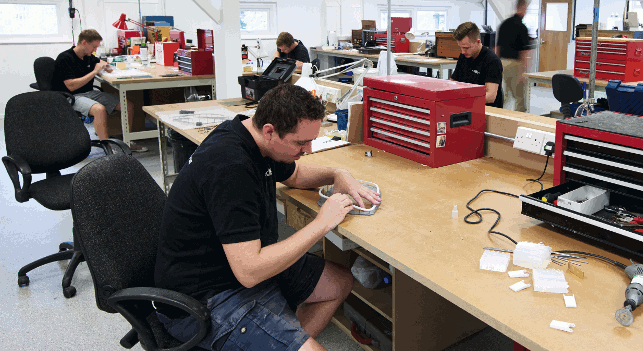
Ogle has recently undergone a restructuring to improve the working environment and improve efficiencies
All the Landspeeder and Snowspeeder models for the film were built by Ogle, which actually co-operated in the production of the film itself.
For the next 25 years Ogle was involved in both the design and physical making of models for a wide range of clients and industries (see below). However, in 2000 it decided to sell the design arm of its business to concentrate wholly on model making and prototyping.
But what exactly is model making? Essentially it’s the physical representation of a product to show what it will look like once manufactured, whether at full size or to scale.
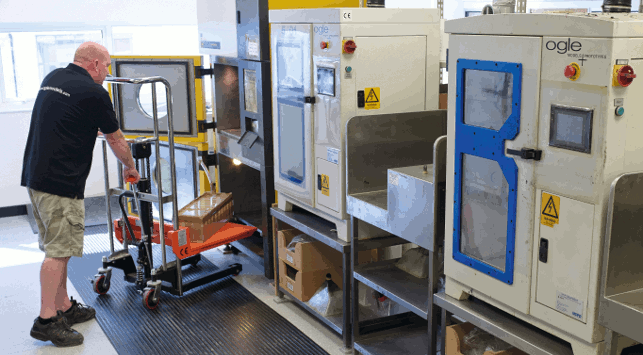
Today, Ogle’s 25,000 square foot facility is kitted out with a raft of machines and tools
To create this ‘looks like, feels like’ model, the model maker would traditionally have used a range of machines – CNC machines and lathes – together with manual tools including disc sanders, circular saws, even needle and thread. It was a highly skilled, labour intensive and lengthy process. But with the onset of 3D printing or rapid prototyping (RP) technology, some of this skill, effort and time was taken out of the process.
Demise of model making?
It could be argued – as in the ‘The demise of model making?’ article featured in DEVELOP3D’s October 2013 issue – that the continuing advancements in 3D printing technology are replacing, or even killing off, the highly skilled craft of model making. And, while some traditional model making companies have had to shut down, companies like Ogle have remained successful by diversifying their business.
Through the continued investment in new technologies – including stereolithoraphy (SLA), selective laser sintering (SLS), vacuum casting and CNC machining – together with traditional model making techniques, Ogle is able to offer a complete service to its clients.
“Traditional model making is still around, but to a lesser degree. However, we still need it – anyone can produce components on a 3D printing machine and we don’t want to turn into a company that only produces commodities,” explains Len Martin, MD of Ogle and one of the three directors, along with Steve Willmott, technical director, and Dave Bennion, sales and marketing director, who carried out a management buy-out in 2002.
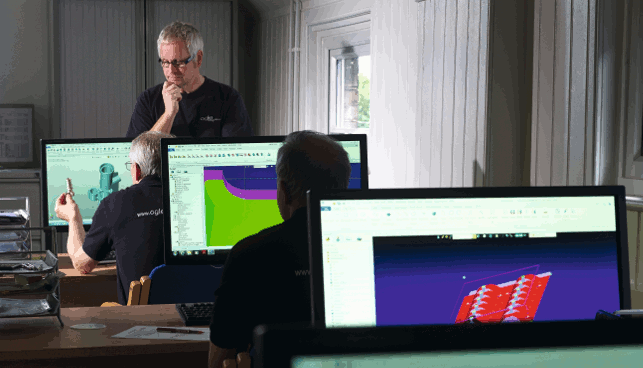
Ogle can translate many file types having a range of software in-house
Martin and Willmott can’t help sharing a laugh discussing how 3D printing is seen as new when really this additive manufacturing technology has been around for years.
In fact, Ogle was one of the first companies to buy a SLA machine 18 years ago – a 3D Systems 350 – which is still in operation today albeit much updated. So, this capability of ‘printing’ parts directly from CAD data, one layer at a time, is by no means novel.
“I first saw SLA in 1993 or 1994 on the television programme ‘Tomorrow’s World’. We all joked about it here at Ogle saying ‘it won’t affect us’. But I was convinced that this was the way to go. It was the future and if we didn’t invest in this machine, we’d go bust. And within five years it absolutely transformed the business,” says Martin.
That was just one of many investments that the company has made. Today its 25,000 square foot facility, which has recently undergone a restructuring to improve the working environment, streamline the work flow and increase efficiencies, is kitted out with a raft of machines and tools, including a dedicated finishing and painting facility.
The first of two recent investments is the ColourPro colouring system – with the ability to offer a vibrant colour range for SLS models and prototypes.
This cost-effective alternative to paint finishes, is a process that has been developed in-house and is suitable for colouring large and small parts, regardless of part geometry and complexity.
The second investment is a new 4 x 2.6 x 1.5 metre Belotti 5-axis CNC machining centre, which will be up and running by December. “It will increase capacity but also gives us the ability to do more technically challenging projects for our Formula 1 and aerospace clients, for instance,” comments Bennion.
All shapes and sizes
Projects vary a great deal from small medical widgets and e-cigarette prototypes up to a 41 seat aircraft and full-size boat models.
Clients vary too, from the manufacturers themselves, such as Bentley, Lamborghini, Jaguar Landrover and Glaxo Smith Kline, to product design consultancies, such as Product Partners, Bee Design, DCA, Forpeople and Seymour Powell.
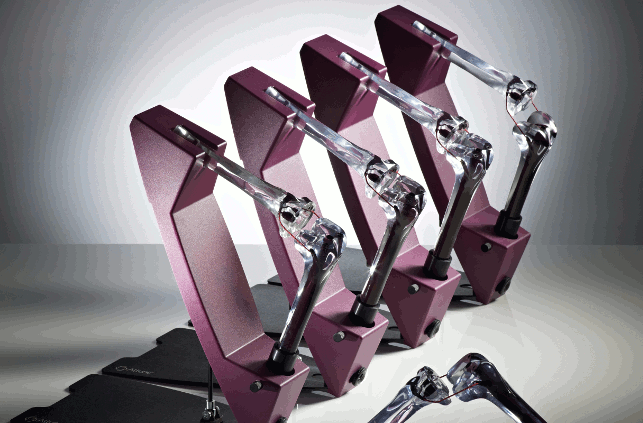
Bone models produced for DePuy Orthopaedic
Typically the client will provide data by converting CAD into either STL (for 3D printing) or IGS or STEP (for CNC machining) file formats. However, Ogle does have the ability to translate many file types having a range of software in-house including SolidWorks for CAD, ZW3D for CAD/CAM and then Spaceclaim and Magics for STL preparation for 3D printing.
With the files in hand, Ogle decides the best way to go about developing the model. For instance, in a project for DePuy Orthopaedic, a manufacturer of surgical instruments, Ogle produced six bone models that would be used to demonstrate a total knee replacement procedure.
Working with DePuy and its design consultancy partner Skywide Design, Ogle produced the models using a combination of 3D printing, machining and vac moulding processes to ensure they were robust yet minimal in part.
Communication skills
Most development projects are constrained by a tight time frame and budget limitations however, Ogle manages its client’s expectations through constant communication.
“One of our strongest skills is speaking to clients directly – this is really important,” says Bennion.
A very recent project that showcases these skills was carried out for Cranfield Aerospace (CAe). Based in close proximity to Ogle in nearby Bedford, CAe, a wholly owned subsidiary of Cranfield University, approached Ogle to develop and manufacture motion cueing simulator seats (in other words, ejector seats).

Ogle worked with its client Cranfield Aerospace to produce motion cueing simulator seats for fast jet pilot training
These CAe-supplied high fidelity replica seats are used in over 30 of the world’s air forces to train jet pilots within a simulation environment.
CAe had used Ogle for smaller projects in the past and, having proved themselves, CAe felt confident using them for this larger project.
“The close proximity, compared to our previous US supplier, was also important as this allowed constant design discussion and interaction during the build process,” explains Daniel Jackson, project manager at CAe.
The brief was to build two ejector seats that would not only incorporate CAe’s motion cueing technology, which essentially simulates the feeling of actual aircraft motion for the pilot, but also a series of mechanical modules such as a parachute pack and gun rails.
CAe provided data as CATIA stp and iges files as well as through 2D CAD drawings. “We read these files into ZW3D and then modified them to create an assembly where the various bits can be added on,” explains Dave Orman, Ogle’s model shop manager.
From here Ogle could start to plan which components had to be created from scratch and which items could be reclaimed from two old ejection seats that CAe provided.
“We had to gain an understanding of what they wanted from us really in terms of the tolerances and the fits,” comments Orman. “There were parts that had to work mechanically and others that could just be dummy parts.
We also had to work out what parts could be cannibalised off the old ejector seats.”
Once the planning stage was complete, seat cushion and back moulds were CNC machined directly from ureol model board before created in glass-reinforced plastic (GRP). Other components that were CNC machined included the working mechanisms and micro switches. These were then installed onto the main frame, which was made from sheet metal by an outside supplier, and tested to make sure they worked as intended.
Throughout all this work, there were ongoing meetings between CAe and Ogle. Being only 25 miles away, CAe would periodically visit to check on the status of the project. “The logistics of this project were extremely important, especially when coupled with Ogle’s ability for rapid response to design change. “Ogle was able to keep CAe informed of progress and build issues as they occurred to help us keep to a very tight schedule,” says Jackson.
After finalising the seat models and frames, the entire unit was taken apart and all of the components finished to the required specification before the final assembly. Even the labels that appear on a production seat were applied to make the models look authentic.
Jackson was very pleased with the quality of the final product. “Every quality decision was put to us by Ogle to ensure that we had an end product that would suit our client’s needs,” he says.
Since the project, CAe have used Ogle to create parts for a motorsport simulator and have another aerospace motion cueing seat in the pipeline.
Different skill set
It’s evident that, despite the many high tech solutions Ogle offers, it still requires a great deal of skill to put the models together.
Although some of the traditional bench model making skills (see below) may no longer be required, today’s model makers need a different skill set. As well as being skilled in the use of all conventional workshop equipment including woodworking, milling and turning, model makers also have to possess a good knowledge of, and preferably be able to operate, the newer technologies including SLA, SLS and vacuum casting.
However, finding qualified people is challenging especially as product model making courses are no longer offered by UK colleges and universities. Hand skills cannot be taught overnight and, for this reason, Ogle has an apprenticeship scheme in place.
“We train people in-house, which is important because we are all getting older and if we don’t have these skills we won’t be able to offer a whole project solution to our clients,” says Bennion.
So, although some may say that the era of traditional model making is drawing to a close, Ogle proves that it’s not only surviving, but thriving. “We managed to go through the economic downturn and last year we had a 14 per cent increase on turnover,” says Martin.
“We have invested in both staff development and new machinery because you have to keep ahead of the game. It’s a race all the time.”
History of Ogle
Designer David Ogle founded Ogle in 1954.
In its early years, spurred by Ogle’s obsession with cars, the company produced a variety of design concepts for the automotive industry and even embarked on small scale production, including the Ogle SX 100 Mini based on Mini running gear of which nearly 100 were made.

However, following the death of Ogle in 1962 the company ceased car production and, with industrial designer Tom Karen at the helm, concentrated on the design and development of household and transport products.
Having moved to its Letchworth premises in 1960, where it’s still located today, the company engaged with a number of new clients from a range of industry sectors, including Electrolux, Paxton and Reliant.
Some notable products it created during the 60s and 70s include the TR82 Bush Radio, Raleigh Chopper, the awardwinning T45 truck cab for Leyland Vehicles and the Reliant Scimitar.
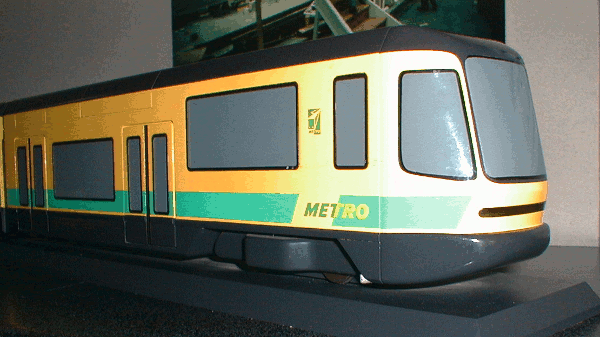
Further growth and an increasing workforce saw dramatic expansion of the facility in the 1980’s with the ability now to create full-scale models. The first large project was a double-decker bus.
Ogle’s design team had grown to 60 strong but by 2000 this had dwindled and the decision was taken to sell the design arm of the business to concentrate on model making and prototyping.
Today, its roots in the automotive sector are still evident in its work with global brands including Mercedes, Bentley Motors, Lamborghini and Jaguar Land Rover.
Early days of model making
Many of Ogle’s staff have been in the model making profession for a long time seeing firsthand the changes that CAD and 3D printing have brought about.
Dave Orman, Ogle’s model shop manager, began 30 years ago at the company having started out as a pattern maker at Vauxhall Motors.
Similarly, Ogle’s MD Len Martin also started out as an engineer and pattern maker before moving to Ogle as a model maker 36 years ago.
“In those days a model maker would literally fabricate models from scratch. A presentation model, for instance, was carved out of wood based on the client’s 2D drawing. So, it was the model maker’s interpretation of what was drawn on the piece of paper.”
If it was a plastic component, we’d fabricate it from a flat sheets of ABS and then form, bend and cut out all the bits and carefully fit all the parts together.
“I remember doing an old handset that came with a keyboard on it. It was a difficult and highly skilled job fabricating it out of all those little bits and pieces, which probably took three to four weeks to do. Whereas now, it’s built on an SLA overnight, ” adds Martin.
Although some of these traditional skills may no longer be required, today’s model makers need a different set of skills. As Martin says, although the computer may have replaced a chisel, you still need to know how you’re going to create that model, break it apart and put it back together again.
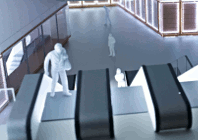
On its 60th Anniversary Ogle is thriving by combining experience with technology
Default






